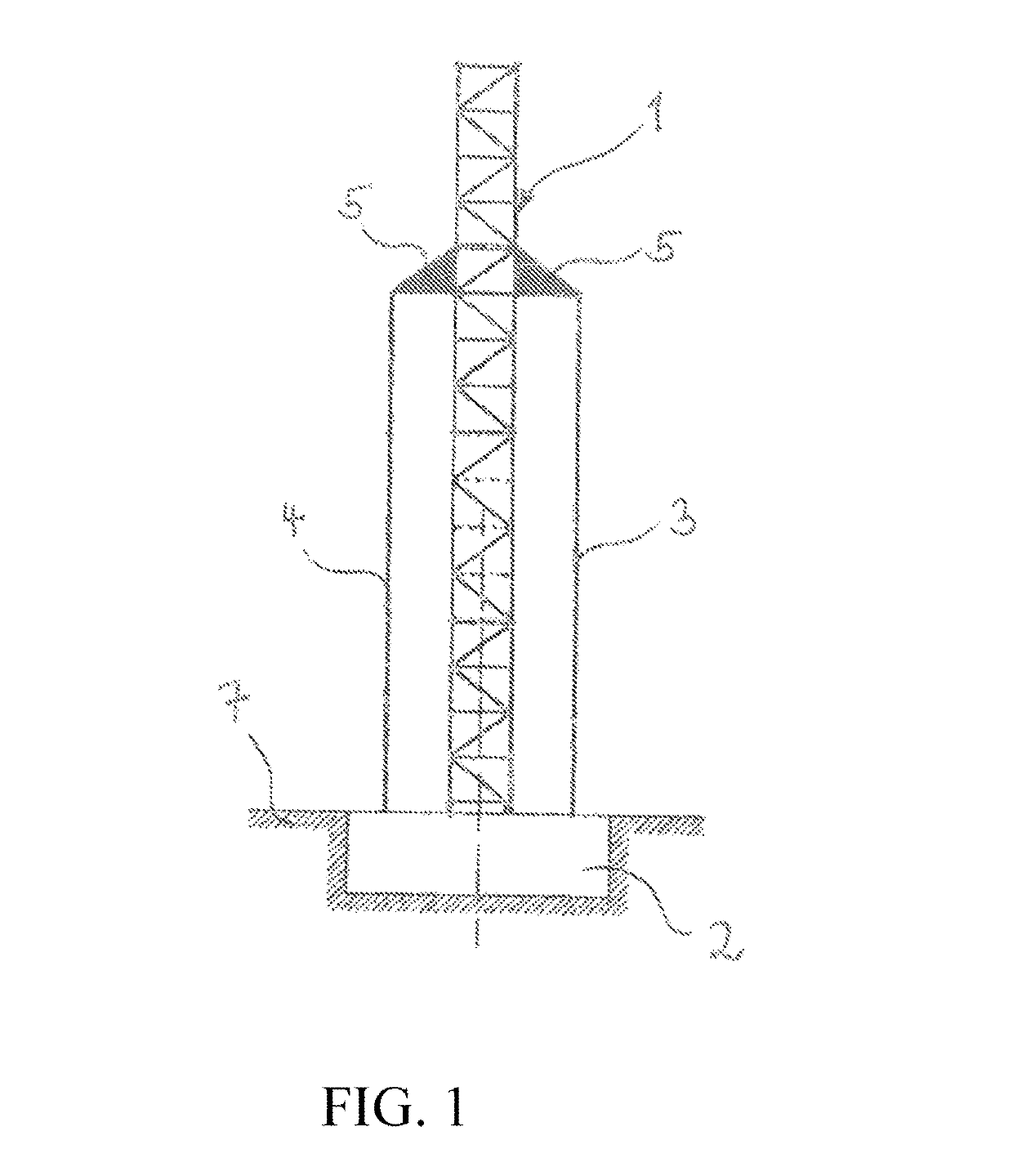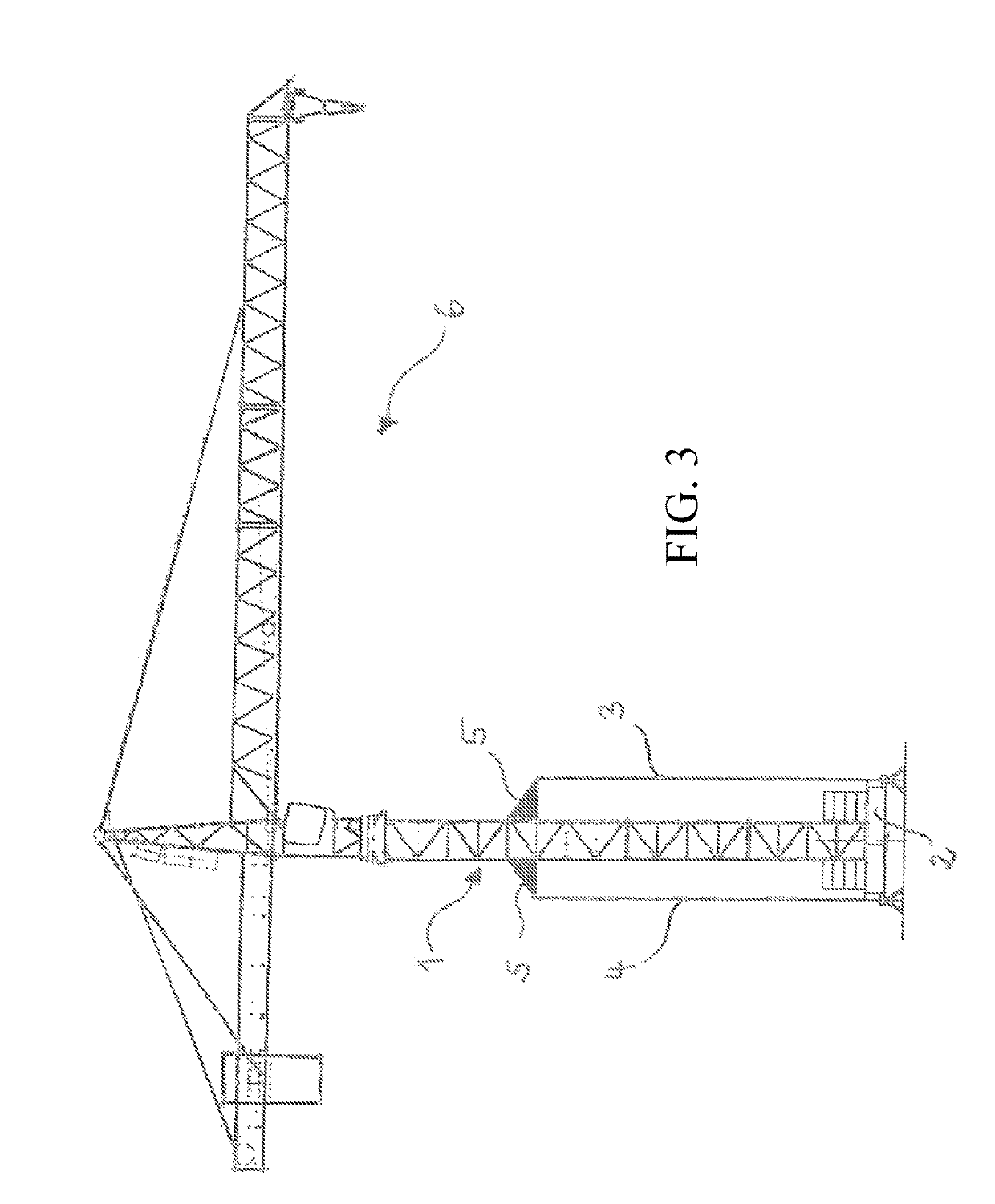Crane tower
a crane and tower technology, applied in the direction of towers, buildings, constructions, etc., can solve the problems of heavy and expensive cranes, inability to unite two opposite endeavors with conventional cranes, and huge transport expenditure, and achieve high load, load bearing, and resistance. high
- Summary
- Abstract
- Description
- Claims
- Application Information
AI Technical Summary
Benefits of technology
Problems solved by technology
Method used
Image
Examples
Embodiment Construction
[0030]FIG. 1 shows a crane tower 1 that is fixed to a crane tower base 2. The crane tower base 2 has an upper surface, which faces the crane tower 1 and whose level is similar to that of the ground 7 surrounding the crane tower base 2. On a level spaced apart from the crane tower base 2, the crane tower 1 has provided thereon coupling elements 5 projecting from the crane tower 1. Each coupling element 5 has a tension element 3; 4, which is associated therewith and which connects the coupling element 5 to the crane tower base 2. The tension element 3; 4 extends downwards from its point of connection with the coupling element 5, substantially parallel to the longitudinal direction of the crane tower 1. Alternatively, the tension element 3; 4 may, however, also extend, in a manner that is here not shown, at an oblique angle or “criss-cross” relative to the crane tower base 2 from its point of connection with the coupling element 5. Due to the bracing of the tension element, the crane t...
PUM
 Login to View More
Login to View More Abstract
Description
Claims
Application Information
 Login to View More
Login to View More - R&D
- Intellectual Property
- Life Sciences
- Materials
- Tech Scout
- Unparalleled Data Quality
- Higher Quality Content
- 60% Fewer Hallucinations
Browse by: Latest US Patents, China's latest patents, Technical Efficacy Thesaurus, Application Domain, Technology Topic, Popular Technical Reports.
© 2025 PatSnap. All rights reserved.Legal|Privacy policy|Modern Slavery Act Transparency Statement|Sitemap|About US| Contact US: help@patsnap.com



